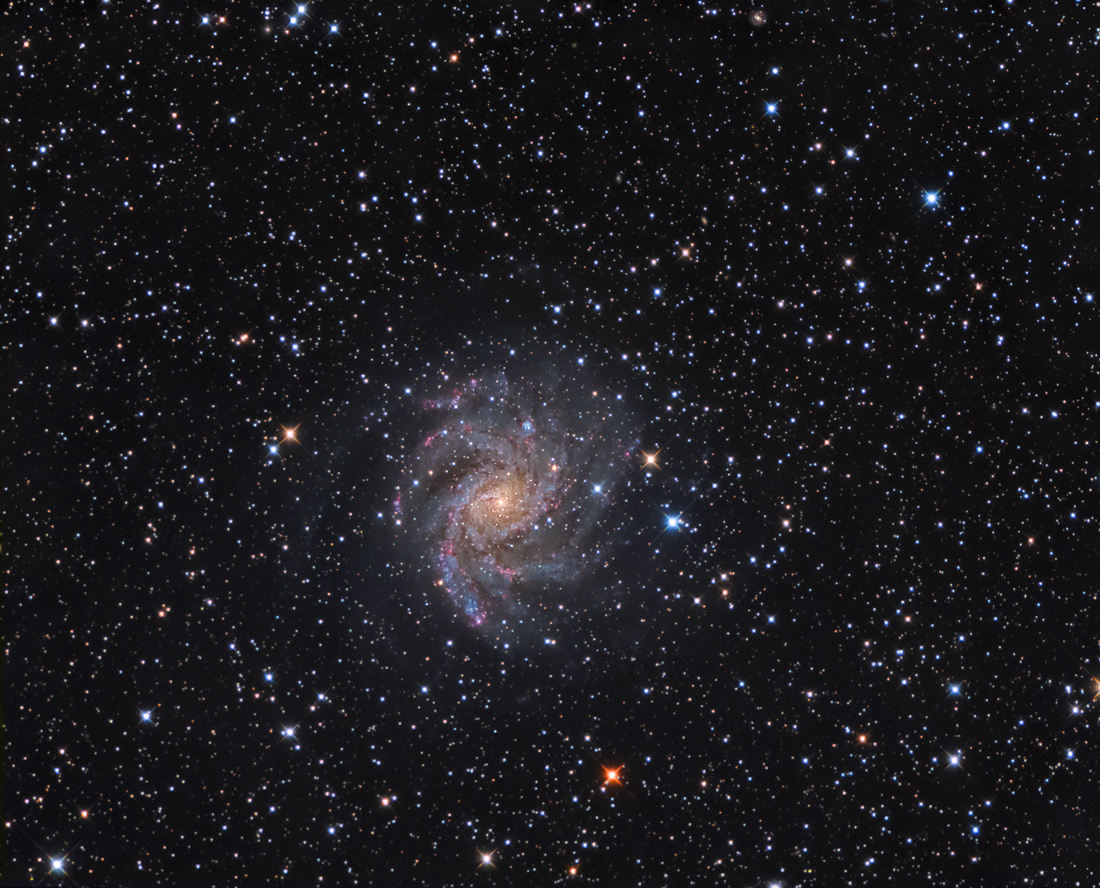Technical details:
Location / Date: Outside of Kopparberg, Västmanland, Sweden / 2017-September
Optics: Orion Optics UK AG12
Mount: 10 Micron GM1000 HPS (Unguided)
Camera: Atik One 6.0 with Astrodon 1,25" L-RGB Gen 2 E-Series filterset
Exposure: L:37 x 300s, R: 11 x 300s, G:11 x 300s, B:12 x 300s
(cumulative exposure time is 5 hours and 55 minutes)
Processing: Pixinsight and Photoshop
Image details:
NGC 6946, (also known as the Fireworks Galaxy, Arp 29, and Caldwell 12), is an intermediate spiral galaxy about 22.5 million light-years away from Earth, in the constellations Cepheus and Cygnus. It was discovered by William Herschel on September 9, 1798. NGC 6946 is highly obscured by interstellar matter of the Milky Way galaxy, as it is quite close to the galactic plane. Nine supernovae (SN 1917A, SN 1939C, SN 1948B, SN 1968D, SN 1969P, SN 1980K, SN 2002hh, SN 2004et, and SN 2008S) in the last 60 years or so, have been observed in NGC 6946. (Information from Wikipedia)
On 2017 May 14 at 05:42:43 UT supernova AT 2017EAW in NGC 6946 was discovered by Patrick Wiggins, Tooele, UT, USA. It has been classified as a type IIP supernova
This supernova is the 10th to be discovered in NGC 6946 in the last 100 years.
See right image below or the annotated image above for SN2017E.
For comparison, the left image below which I captured in 2014, shows when the super nova was not present.





